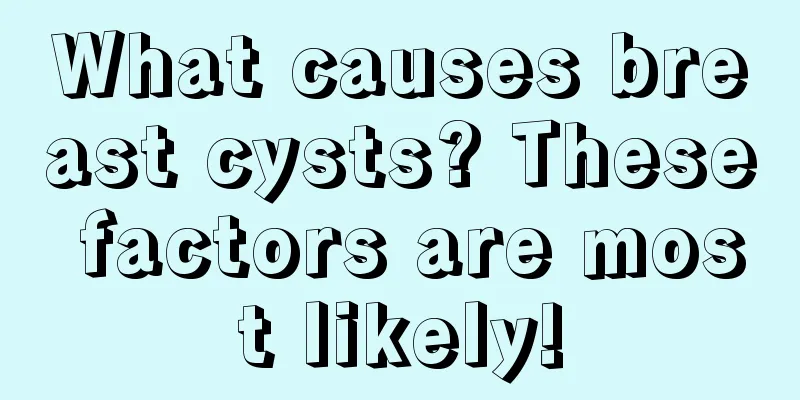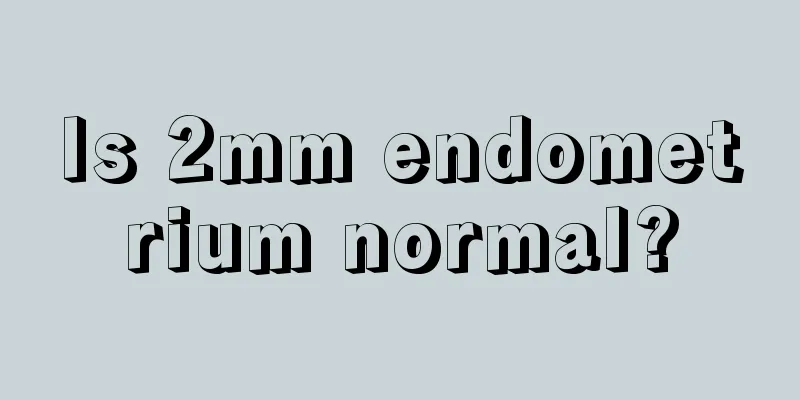What causes breast cysts? These factors are most likely!

|
There are two types of breast cysts, one is simple cyst and the other is enteric cyst. It is worth mentioning that both of them are benign lesions, so the harm is not that great, but it should also attract the attention of women, because if the disease develops seriously, it may lead to cancer, which will be very harmful. So what are the causes of breast cysts? 1. What is breast cyst? 1. Breast cyst, also known as milk stasis, is caused by the poor discharge of milk from one lobe of the gland during lactation, resulting in the accumulation of milk in the breast. The main clinical manifestation is a tumor in the breast, which is often misdiagnosed as a breast tumor. 2. Clinically, it is more common to cause breast structural abnormalities, inflammation, and compression caused by tumors. When the epithelium of the mammary lobe or lobule duct falls off or other substances block the duct, milk cannot be discharged smoothly and stagnates in the duct, causing the duct to expand and form cysts. 3. Cysts may become infected and lead to acute mastitis or breast abscesses. If there is no secondary infection, they may exist for a long time. The contents of the cysts become thicker, and over time, the water in the cysts can be absorbed, causing the cysts to harden. 4. The cyst wall is composed of a thin layer of fibrous tissue, lined with a very thin layer of epithelial cells on the inside, which even falls off in some places. Inside the cyst is a light red amorphous structure and foamy cells that swallow milk. 5. A large number of monocytes, epithelial-like cells, multinucleated giant cells, lymphocytes and plasma cells infiltrating the stroma around the cyst can be seen. Dilatation of small ducts and lactating glandular lobule tissue can also be seen. 2. Causes of Breast Cysts: Breast Cysts Also known as milk retention cyst, it is less common than simple cyst. It is mainly due to the blockage of a duct during lactation, which causes milk stasis and forms a cyst. Cysts can occur anywhere in the breast, but are most common deep in the breast. This disease is more common in women of childbearing age, often occurring during pregnancy or lactation or after lactation, with breast lumps as the main clinical symptom. The lumps are mostly round or oval, with a smooth surface, a cystic feel, clear boundaries, wide mobility, and no adhesion to the skin. In case of secondary infection, local inflammatory reactions such as redness, swelling, heat and pain can be seen, and enlarged lymph nodes can be felt in the ipsilateral axilla. At this time, it is necessary to differentiate it from non-lactation mastitis and breast cancer based on the breastfeeding history. Puncture can extract milk-like fluid, which is also an effective method for differential diagnosis and treatment. If the cyst is large, the patient has a long history of infection, or the infection recurs repeatedly, surgical removal of the cyst is recommended. 3. Causes of Breast Cysts: Simple Cysts It is most common in breast cysts. It is mainly due to endocrine disorders that cause ductal epithelial hyperplasia and an increase in cells in the duct, resulting in ductal extension, tortuosity, and folding. The duct wall at the folding site undergoes necrosis due to ischemia, forming a cyst. This disease often occurs in middle-aged women, with round or oval breast lumps as the main symptoms. Cysts are mostly single, and the tumors often grow rapidly, which can easily be confused with breast cancer. The size of the cyst often changes with the menstrual cycle and is accompanied by premenstrual breast pain. Simple cyst. 1Can cancer really occur. After auxiliary examinations confirm that it is a cystic tumor, puncture can be performed. On the one hand, cytological examination of the punctured material is performed to confirm the diagnosis; on the other hand, after the fluid is extracted, the cyst will not recur in some patients, thus playing a therapeutic role. If there is no effect after multiple punctures, or if cytological or histological examinations confirm epithelial hyperplasia or papilloma, surgical treatment is recommended to prevent malignant transformation. |
<<: Does catching a cold during confinement really cause a serious illness?
>>: What should pregnant women do if their glucose level is high?
Recommend
Ovulation sleepiness
Women are more likely to get pregnant if they hav...
Pain when urinating immediately after sex
If there is a stinging pain in the urethra during...
How to screen for nasopharyngeal cancer early?
Simply put, NPC is a malignant tumor that grows i...
Will the second time cause bleeding if it's too long?
Although today's medical technology is very a...
Must-check items for pre-pregnancy checkup at an advanced age
It is very common for older women to create babie...
Woman wakes up with swollen eyelids in the morning
The symptom of eye swelling is more obvious and w...
Pregnancy check-up list
Pregnancy is the beginning of the birth of a new ...
How to do vaginal tightening exercise
If a woman has experienced multiple miscarriages ...
What to do if you have lice on your lower body
Many women may experience itching in their lower ...
What is the cause of left lower back pain in women
The lady felt pain on the left side of her waist....
Today is the Autumnal Equinox. To prevent autumn dryness, I will teach you 5 autumn health tips!
The Autumnal Equinox is an important turning poin...
How harmful are irregular menstruation?
Irregular menstruation can cause great harm to pa...
How to eat Beef Wellington? Can beef tenderloin be fried into steak?
Beef tender shoulder contains high-quality protei...
What to do if there are bilateral breast hyperplasia changes
Many people are not familiar with bilateral breas...
Can women have kidney deficiency?
Generally speaking, when it comes to kidney defic...









